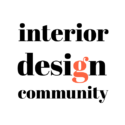
We’ve all been there: you have a fantastic first meeting with a potential client. The conversation flows, the budget sounds promising, and they seem excited to work with you. Then…radio silence. No responses to your emails, no texts, no calls. You’re left wondering, Did I say something wrong? or worse, Should I reach out again—or let it go?
Following up with potential clients is an art. Done right, it can turn lukewarm leads into full-fledged projects. Done wrong, it can feel like chasing someone who doesn’t want to be caught. In this post, I’ll share strategies for following up without seeming pushy and include real insights from the interior design community.
Why Following Up Is Essential
Let’s face it: life gets busy. Potential clients might be dealing with unexpected personal issues, still exploring their options, or simply not ready to commit. Following up keeps you top of mind and ensures you’re not forgotten in the shuffle. But it’s also a balancing act—you don’t want to appear desperate or overbearing.
A strategic, well-timed follow-up process demonstrates professionalism, persistence, and respect for the client’s timeline. When done correctly, it can significantly improve your chances of landing the project.
My Approach to Client Follow-Ups
From my experience, a structured approach to follow-ups works best. Here’s how I handle it:
- Send a Polite Follow-Up Email
I always send a follow-up email within 48–72 hours of the initial meeting or proposal. This email includes a thank-you for their time, a summary of what we discussed, and a gentle reminder to reach out with any questions.Example:
“Hi [Client’s Name], it was a pleasure speaking with you about your project on [day of the call/meeting]. I’ve attached the proposal we discussed, and I’d be happy to walk you through any details. Let me know if you’d like to schedule a time to connect!” - Follow Up with a Call (Optional)
If I don’t hear back after the first email, I may follow up with a quick phone call a week later. I keep it casual and non-intrusive—just a friendly check-in to ensure they received the proposal and see if they have any questions. - Send a Final Follow-Up
After two follow-ups, I send a final email—usually around the two-week mark. In this email, I let them know I’m happy to discuss further if they’re still interested but will leave the ball in their court moving forward.Example:
“Hi [Client’s Name], I wanted to follow up once more regarding your project. If you’re still interested in moving forward, I’d love to help bring your vision to life. Feel free to reach out whenever you’re ready!”
After this, I let it go. If a client is genuinely interested, they’ll respond when the timing is right.
Best Practices for Client Follow-Ups
1. Space Out Your Follow-Ups
Don’t bombard your client with daily emails or texts. Respect their time by spacing out your follow-ups—one message per week is a good rule of thumb.
2. Be Professional, Not Pushy
Maintain a friendly and professional tone in all communication. Avoid coming across as desperate or overly aggressive.
3. Diversify Your Methods
If your initial follow-up was an email, try a phone call or even a handwritten note for subsequent follow-ups. Some clients respond better to different communication methods.
4. Respect Boundaries
If you’ve followed up two or three times and still haven’t received a response, it’s time to move on. It’s better to leave a good impression than risk souring the relationship.
Insights from the Interior Design Community
Here’s how other designers handle client follow-ups:
- @idgreenlist: “We use Dubsado for lead capture and follow-ups. After sending an initial email with a welcome packet and discovery call link, we follow up twice—once after two business days and again a week later. A final email asks, ‘Have you given up on your project?’ Beyond that, we don’t chase clients. Clients excited to work with us usually book right away.”
- @jennifertaylordesign: “I don’t give proposals unless we have an in-person, paid initial consultation. After sending an agreement, I follow up once. The agreement expires in seven days, which usually motivates a response. This keeps things moving efficiently.”
- @havendesignandconstruction: “If you’ve reached out a time or two, let it go. Often, delays have nothing to do with you—a client may be dealing with personal matters. I’ve had clients return months or even a year later, ready to proceed. Don’t take it personally, and don’t seem desperate.”
- @designologystudio: “We follow the three-times rule. After three follow-ups, we move on. Respecting your time and theirs is key, and clients will come back when they’re ready.”
These perspectives highlight the importance of having a structured follow-up system while maintaining professionalism and understanding.
What to Do If They Still Don’t Respond
After your final follow-up, the best course of action is to move on. Here’s why:
- They Might Not Be Ready: The client could still be weighing their options, adjusting their budget, or dealing with personal issues. Pushing too hard can backfire.
- Your Time Is Valuable: Spending too much effort chasing unresponsive leads takes away from pursuing other opportunities or serving existing clients.
- Leave the Door Open: A respectful, friendly final email ensures the client feels comfortable reaching out in the future.
Even if a client doesn’t respond now, they may come back later when they’re ready to move forward.
Final Thoughts: The Art of Letting Go
Following up with potential clients is an essential part of running a successful interior design business, but knowing when to stop is just as important. By creating a structured follow-up process and maintaining professionalism, you’ll strike the perfect balance between persistence and respect.
What’s Your Strategy?
How many times do you follow up with a prospective client before moving on? Share your tips and experiences in the comments below!

